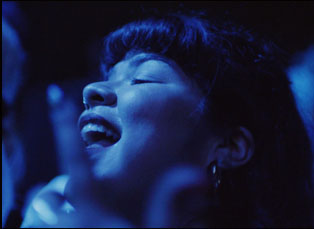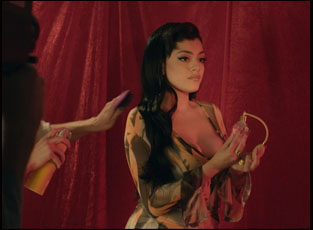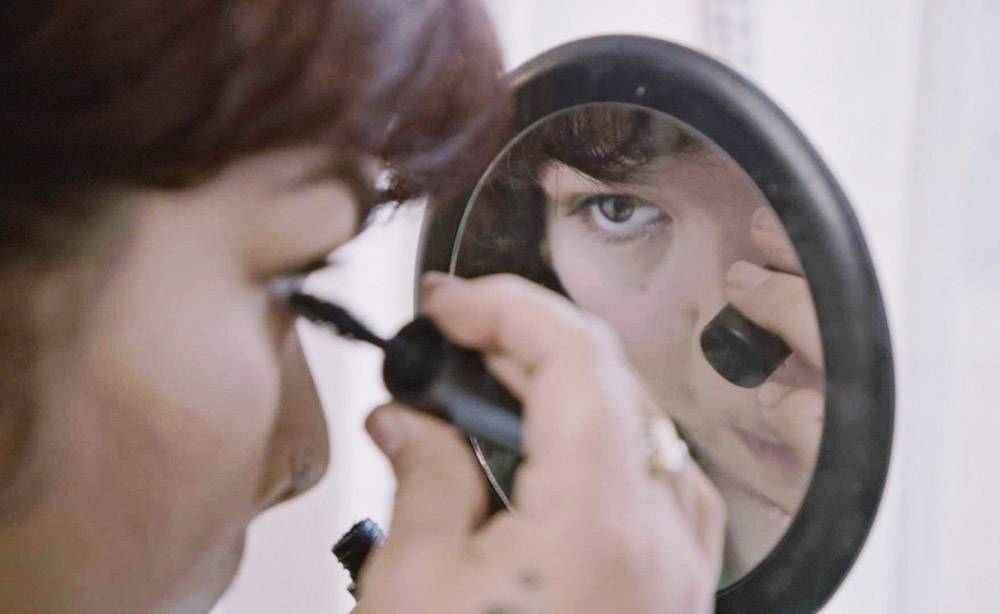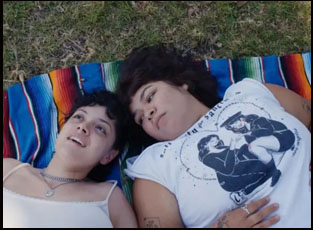Isabel Castro had grown frustrated with finding a form of storytelling that was right for her, accumulating skills across a variety of mediums while trying them out for size. Working a variety of gigs that would include being a producer for Vice and a multimedia journalist for the New York Times, she experienced a restlessness within the constraints of a process that would breed familiarity rather than break the mold.
“I think what I was reacting to at the beginning of making this film was really a craving have more of a subjective viewpoint in the way that I was telling a story,” says Castro of her triumphant debut “Mija.” “By that, I mean just really exercising more authorship over the visuals of the story and integrating things like voiceover that felt maybe a little bit more literary and subjective. I was craving employing some tools that deviated from the traditional understanding of how you do a documentary or journalism.”
Although it is bound to be the less obvious quality she has in common with Doris Anahí Muñoz and Jacks Haupt, the main subjects of “Mija” when all are the daughters of first generation immigrants in America, a shared desire to push past conventional wisdom in their art is what ultimately makes the film transcendent, a story where borders are felt every day when their households are divided among those who have U.S. citizenship and those who do not yet they create a space for themselves in their work that has no such limits. The film begins following Doris, who harbors dreams of becoming a singer herself and has the pipes for it – it isn’t a spoiler to say she recently released her first album – but she pours her creativity into managing other musicians’ careers, helping to turn Omar Banos, better known to his legions of fans as Cuco, into a pop sensation. Her grace under pressure while organizing his tour dates and tending to the minutiae of his career may be due in part to the organizational skills she’s developed at home where every year her parents apply for a green card that they have yet to receive and struggle to stay connected to their son Jose who was deported back to Mexico five years prior.
While there’s much that Castro couldn’t anticipate during the making of “Mija,” a global pandemic dramatically rerouted Doris’ life when setting up tours for Cuco was no longer possible, turning her attention to finding new artists online and discovering Jacks, an enchantress from Dallas who has her own complicated family ties to consider as she pursues a career as a singer, and the film not only takes an enthralling turn narratively but formally as well upon becoming something of a duet between Doris and Jacks, whose lives intertwine professionally but reflect one another’s personally as they strive for a sense of independence from the circumstances they were born into. Captured with ethereal, elusive camerawork and feeling almost conspiratorial with a voiceover from her subjects that seems like a close friend leaning over to impart secrets, “Mija” comes across more as a tender embrace than a mere movie, channeling the lives of millions rarely seen on screen while evolving into a singular experience of its own.
After its premiere earlier this year at Sundance, “Mija” will be beamed far and wide with its release in Disney Plus and Castro spoke about how she crafted something so personal and resounding with the film and keeping tabs on her subjects’ Instagrams to stay ahead of the curve, as well as finding the shape of a story in which she’s breaking a cycle behind the camera as much as those who appear in front of it.
I had been trying to figure out a way to do a story about immigration, but in a way that felt really tonally different from the ones that I had been telling, and I came up with the idea to try to do a music doc, but that incorporated immigration topics and themes. At some point I came across an article in the California Sunday magazine about Cuco. I was just really moved by his music and the ways that he was supporting his family through his music, so I reached out to Doris because she was his manager at the time in the winter of 2019. We started talking over the course of a couple of months and along the way, she invited me out to a concert that she had organized in New York — that’s actually the first concert that you see in the film.
I went out to New York to check it out to see if it’s a story that you want to do, and you get to meet some of the folks that you would be filming with or recording with, and over the course of those three days, I really became convinced that this was definitely the story I wanted to tell, that being how young children of immigrants were navigating their way through the music industry to try to support for their families back home.
How did you figure out the structure of this, particularly when it ends up being not only Doris you focus on, but Jacks Haupt as well?
I went into the film thinking I was going to make a very different film than the one I ended up making. I thought I was going to film with Doris as a music manager, traveling the world, supporting different artists and musicians that she was working with at the time. And when the pandemic hit and the music industry came to a halt, all of those plans went out the window. The film that I had been trying to make was no longer possible. Concerts weren’t happening, travel wasn’t possible, so it really became a question of, “Okay, how do we still maintain the essence of what this film is ultimately about, which are the pressures that the children of immigrants face, but do it in the new musical landscape that we’re now living in?”

Going into this film, the idea had always been for Doris to be a central character, but to show her really engaging with the music industry when she had not yet launched her own musical career, so I thought it was important to just see the ways that she discovered and scouted new talent. In some ways, the structure became more chronological than I even expected it might. It really went from Doris being curious about what she was going to do with her career to then reaching out to Jacks to then trying to figure out a way to meet her to try to get the wheels in motion and a lot of what she does in the film are very similar steps that she took with Cuco at some point along the way in his career, so it comes as a surprise to many folks when they’re watching the film that this character unexpectedly emerges halfway through the movie, but it reflected the experience of making the film and Doris’s experience of navigating her career. It was completely unintentional and in some ways it was a beautiful surprise.
It was a brilliant way to show multiple experiences without having to leave the main timeline, and I understand that your Instagram stalking may not have been limited to Jacks, but Doris as well and putting together the narration. What was the process was to draw her out for that when it’s so intimate?
The narration was really a labor of love. There were so many people that contributed to it and I don’t want to say the process was messy, but it was a constant work in progress. It was this ever shifting, growing, changing thing that was responding also to the edit that was happening simultaneously. What really helped me set up a foundation for the [voiceover] was that I came from a news producer background in which I worked very similarly with correspondents and with an editor to help shape and edit the segments that we would work on. Oftentimes, [we’d] set up temporary voiceover lines throughout the pieces — a big reason for that is correspondents travel a lot and their schedules are a little bit more unpredictable sometimes than producers, so we would come up with that infrastructure and then I’d sit down with correspondents and really nail down the language of each of the voiceover segments in a way that felt a little bit more true to their way of speaking, incorporating some of their own reporting. It was always a back and forth and for this, it was no different.

The last step was when Doris and I would go in the VO, oftentimes with Yessica Salgado there by our side, she would perform these VO lines in a way where sometimes she would rephrase them in that moment or change the wording of it depending on what felt more natural for her to say and as we went through it, I can’t even count how many different voiceover sections [we did] in the booth to really try to get it right. But it was one of the more creatively challenging and exhilarating parts of the process.
“Mija” will start streaming on Disney+ later this year.





